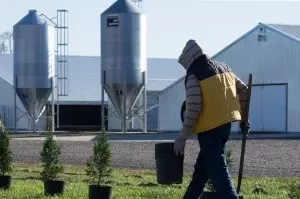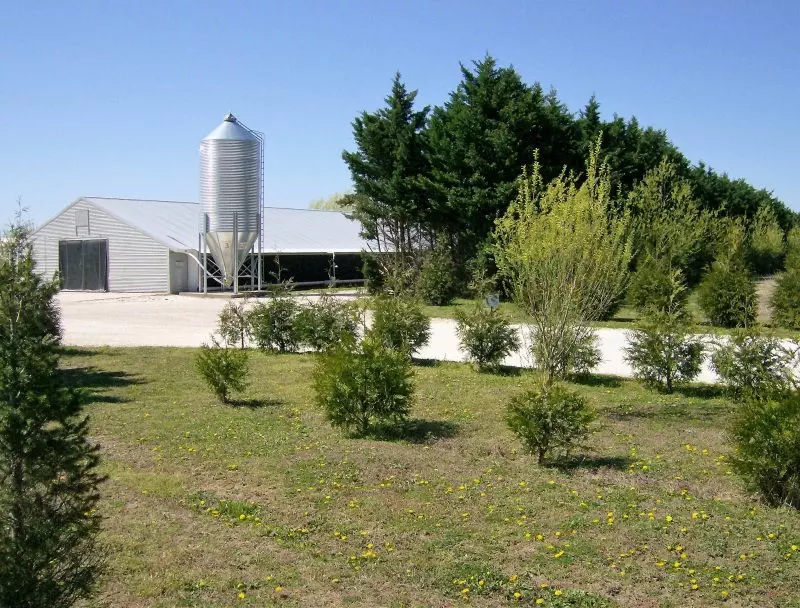 On every chicken farm, there’s open ground between the chicken houses and the property line. Stand there, and you can look toward the chicken house, or turn around, and look to a road, a neighboring farm, or other people’s homes. Family farmers raising chickens have a decision to make: Should that space be covered by grass that needs to be mowed? Or is there a better option?
On every chicken farm, there’s open ground between the chicken houses and the property line. Stand there, and you can look toward the chicken house, or turn around, and look to a road, a neighboring farm, or other people’s homes. Family farmers raising chickens have a decision to make: Should that space be covered by grass that needs to be mowed? Or is there a better option?
The Delmarva Poultry Industry, Inc., a trade association for the chicken industry on Delmarva, has spent more than a decade exploring better options. What they’ve found is that planting vegetative environmental buffers — rows of warm-season grasses, shrubs and tall evergreen trees — on that ground pays real dividends for growers, their neighbors, and the environment. And recently, DPI has been working on a tweak to these buffers to add a benefit for pollinating insects, like bees.
Why should chicken growers plant buffers at all? To start, they provide benefits to the farmer. Acting as windbreaks, they make it less costly to keep chicken houses warm in the winter. During the summer, their shade can cool roofs and intake air. And DPI figured out which plants and trees are hardy enough to be planted close to tunnel fans, where they help capture dust and feathers. Plus, this land doesn’t need to be mowed saving farmers time and money, while cutting back on engine emissions.
As the saying goes, good fences make good neighbors. And these buffers help chicken growers do just that. Placed correctly, they can muffle farm noise and act as a screen between neighboring homes and the chicken houses. It’s clear that a farmer who installs buffers takes pride in their property’s appearance.
“When someone drives by my farm, I want them to think, ‘Oh, there’s a chicken farm — look at the pretty trees,’” said Kimber Ward, a family farmer raising chickens near Salisbury. “Yes, we can have a poultry farm and do positive things for the land at the same time. I have a passion for that. I want to leave the land better than I found it.”
Finally, the root systems of plantings improve water quality overall, filtering and capturing nutrients in storm water. Ward said he’s seen that work on his farm, where buffers planted around a storm water pond have led to measurable improvements in water clarity. The pond’s so clear, he said, that tiny minnows in it are thriving and dining on mosquito larvae to boot. “Little things like that, I believe they all add up,” Ward said.
Bees can also benefit from vegetative environmental buffers. For instance, the program Feed a Bee is all about promoting pollinator-friendly habitats — expanding the places where bees and other pollinating insects can thrive. That’s where buffers can make a difference by including flowering plants. These will give a boost to bee populations, and it will benefit any crop farmer in the area whose crops profit from natural pollination.
Want to learn more? Visit DPI’s website or read more about other practices Maryland’s farmers use on their farms.
-By James Fisher
Communications Manager
Delmarva Poultry Industry, Inc.
Hungry for more? Sign up for our newsletter and find us on Facebook, Twitter and Instagram.

